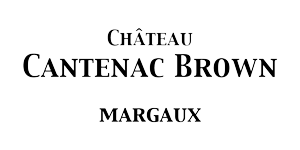After having given you all the characteristics of Cabernet Sauvignon, it is time to focus on Merlot, also very present at Cantenac Brown. Now grown all over the world, Merlot is one of the king grape varieties of Bordeaux. It is found in abundance on the plateaus of Margaux and Cantenac where it expresses all the richness of our terroir. In this article, we propose you to discover the fabulous history of Merlot.
The history of Merlot
Merlot is a Bordeaux grape variety that was first formally identified at the end of the 18th century, although there are traces of it long before that. Moreover, the name of this variety could come from the blackbird. Indeed, this bird appeared as black as the berries of the grape.
Although its history may seem ancient, it is in fact one of the youngest grape varieties of Bordeaux. Recent research has traced the origin of this variety to a cross between Cabernet Franc and Magdeleine noire de Charentes. The variety will be totally imposed following the phylloxera and continues to develop throughout the world.
Recognizing Merlot
Recognition of Merlot is subtle in the vineyard and in the glass. However, this grape variety has characteristics that make it perfectly identifiable. Discover how to recognize Merlot.
Recognizing Merlot in the vineyard
In the vineyards, it is possible to recognize the Merlot. Indeed, it is recognizable by its fleshy bunches and its spherical berries of a beautiful midnight blue color. If you walk through the vineyards near harvest time, Merlot usually matures two weeks before Cabernet Sauvignon. Finally, its high sugar concentration leads to good alcohol production.
Recognizing Merlot in tasting
The aromas of Merlot are recognizable among all. They vary according to the terroir and the maturation of the wine. However, when tasting, you can recognize this grape variety by its aromas of black cherry, black fruit, licorice, plum and chocolate. It is an opulent grape variety, so it is not surprising if it takes a lot of space in the mouth.
The suppleness, roundness and fruity notes of this variety make it easy to identify. Naturally, this variety evolves with time. When young, it expresses all its fruit content and will be explosive. A little older, it will turn to more complex notes of licorice, chocolate and even truffle in some cases.
The cultivation of Merlot
If the cradle of Merlot in Bordeaux remains its favorite land, this grape variety is now cultivated all over the world. It is even the second most cultivated grape variety in the world, behind Cabernet Sauvignon. However, the development of wine production in the new world, and in particular in China and Argentina, should increase the importance of this variety.
France remains, for the moment, the largest producer of this variety with approximately 100,000 hectares dedicated to it. Almost 70% of these are located in the Bordeaux region. In Europe, Italy is in second place in the production of this variety, followed by Eastern European countries (Bulgaria, Hungary, Romania, Moldova).
Elsewhere in the world, this grape variety is also very present. It can be found in the United States, in the Napa Valley, in South Africa, in the Stellenbosch region, in Chile, in Argentina and in New Zealand.
Food and wine pairing with Merlot
Wine and food pairings with Merlot are often synonymous with perfect simplicity and absolute bliss. Without any mistake, you can pair your wine with a red meat. You can achieve the classic combination of wine and prime rib which should be perfect. Lamb and duck breast are also particularly interesting combinations. Finally, you can discover the pairing between wine and chocolate which should whet the curiosity of the most greedy among you.


